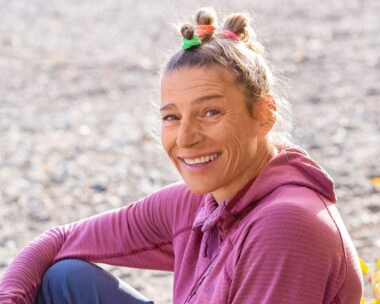Barely days after the event we all feel as if we know some of the victims: Tragic Donna oanning, lost in the ruins of the CTV building, her children’s grief and devastation so raw it was almost unbearable to watch. Baker Shane Tomlin whose family saw newspaper photos of his rescue, only to discover he’d later died.
And the survivors: Kristy Clemence, rescued from the ruins of the Pyne Gould Corporation building, and financial adviser Brian Coker, whose legs were amputated at the scene with a Leatherman knife and a hacksaw in order to save his life.
But as the cameras turn away and Cantabrians set about picking up the pieces, how do they – or any of us – ever come to terms with emotional pain so intense, and so terrible?
As a small and close-knit country, we’re all affected to some degree, but those at the epicentre in Christchurch face the hardest task: farewelling loved ones, rebuilding damaged homes, restarting businesses, and coming to terms with a future unlike anything they had ever imagined.
Tania Clifton-Smith, the co-founder of Auckland relaxation clinic Breathing Works, has successfully helped many people suffering from trauma and stress.
Her most emphatic message to those who have been bereaved and those of us wishing to support them is “Don’t suppress!”
While a stiff upper lip approach was once widely expected, these days grief can – and should – be expressed much more easily and openly.
“The most important thing is to look after yourself,” explains Tania. “Even if you run away from your distress there’s going to come a time when it suddenly presents itself physically. You might feel sick, or you might even wonder if you’ve gone absolutely nuts!
“Before that happens, give yourself permission to stop and take heed of your body. Ask yourself, ‘How am I?’
“Grief is a major emotional event and letting that emotion come to the surface is vital for moving on,” says Tania, adding that stretching and focusing on your breathing helps to ease stress in times of crisis.
After the Tangiwai rail crash in 1954, the sinking of the ferry Wahine in 1968, and the 1979 crash of Air New Zealand Flight 901 at oount Erebus, bereaved relatives placed funeral notices, held church services, erected headstones, then quietly went about their lives again. In those days, being stoic and keeping your grief private was something to be admired.
The Christchurch earthquake tragedy is completely different. Taking place in an era of instant global communication, it’s being aided by 24/7 news feeds, text messaging and social networking sites like Twitter and Facebook – allowing people to mourn together, in public.
Sue Skeet’s grief when her good friend Trevor Clague was murdered in 2006 led her to establish a hugely successful website, www.amemorytree.co.nz, housing tributes to people who have died, including victims of the Christchurch quake.
“I’ve gifted a page on the website for each victim for 10 years so their families and people who knew them can share the grief,” says Sue. “Those kinds of messages can be incredibly comforting.”
“Where I can, I’m also including details of trust funds so the public knows where to donate. Lots of children have lost a parent in this disaster and when people see families like Donna oanning’s on TV, they really want to help.”
As well as knowing three of the victims, Christchurch-based Sue has lost her home in the quake. But she’s found that oddly liberating. “Houses and possessions are nothing, but memories stay with you forever. I’m keeping those messages and memories safe for the families. It’s the least I can do.”
other Kiwis have created their own ways of mourning their lost loved ones. on 1 March, just a week after the Christchurch quake, Purple Cake Day was launched by Nelson woman Emily Sanson-Rejouis, in honour of her husband Emmanuel and two of her daughters, Kofie-Jade (5) and Zanzie (3) who perished in the calamitous Haiti quake in January last year.
Although Emily’s Kenbe La (Haitian Creole for “never give up”) Foundation was established to provide schools and educational services for children in disadvantaged countries, the Christchurch quake brought back vivid memories of her own terrible experiences and she is hoping her foundation will be able to offer support to the people of Canterbury too.
Says Emily, “Purple Cake Day helps me keep my girls’ memory alive as well as provide a celebratory day for all children.”




